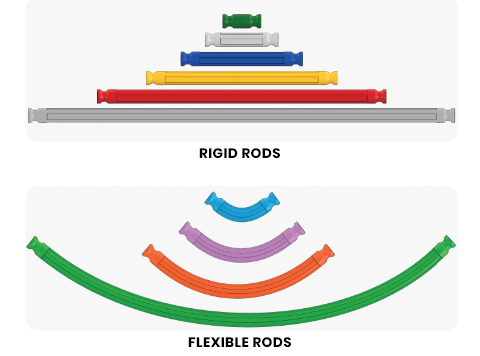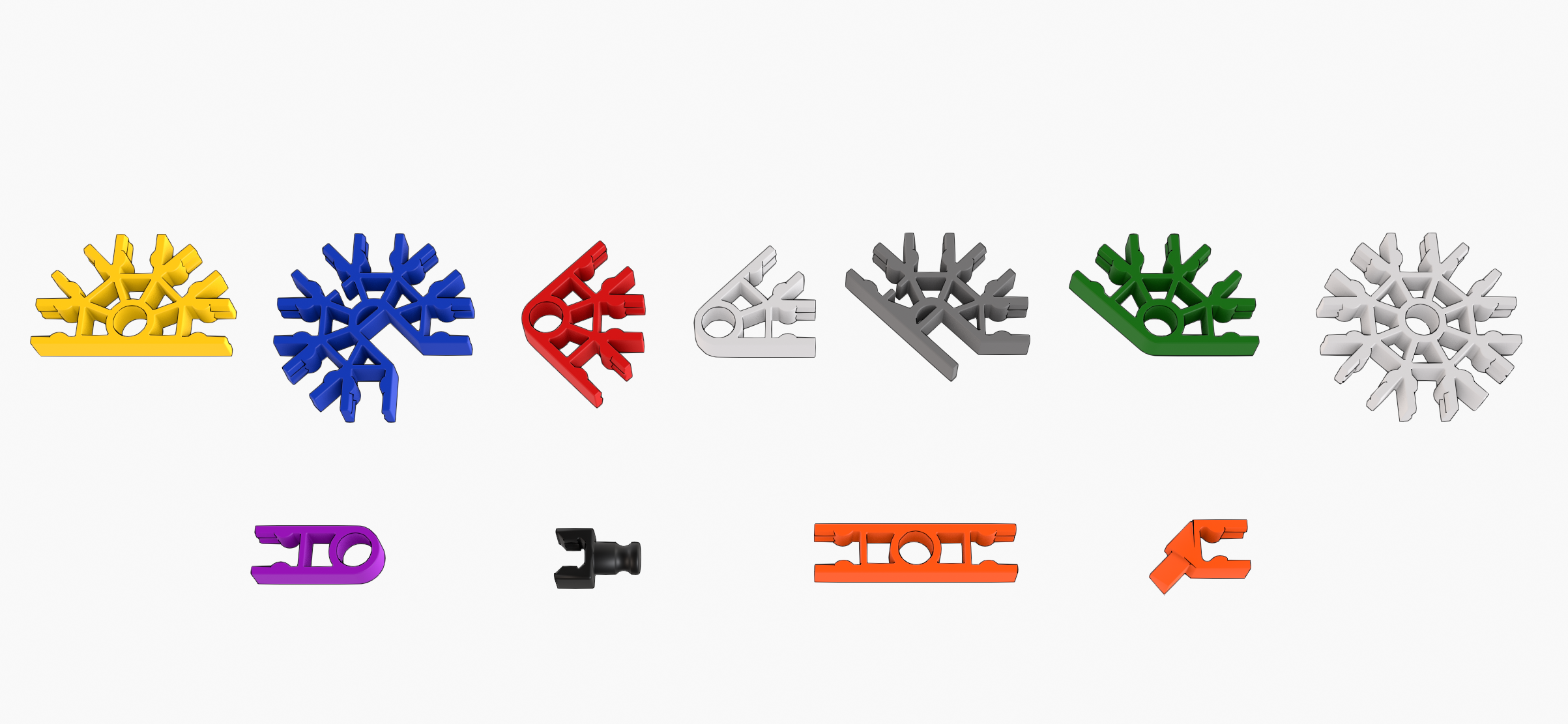CONNECT
Have you ever heard of robotics? What comes to mind when you hear that word? And what are robots? Robotics is a science that explores technology to build robots, which are machines created to perform tasks based on commands given by us and, in this way, facilitate people’s activities. In educational robotics classes, we research, make discoveries and build prototypes, which can be animals, toys, tools or even machine constructions that imitate those we have in real life. With technological structural assembly kits, made up of many colorful parts, we will have an investigative tool to explore different structural construction concepts. To start structural robotics classes, you need to understand some technological concepts, such as bases, beams and connectors.
Bases and beams (rods) are fundamental parts to start assembling a project. They are responsible for supporting and structuring the other components. Just like the bases, the beams are part of the project structure. in the structural robotics kit, they are called hasty. In this kit, we have two types of rods: rigid and flexible.

Connectors are parts used to connect components (connect parts) of the project. Connectors can be parts that fit into others by pressure and can have different sizes, shapes and colors.
Auxiliary parts are responsible for performing functions such as finishing, spacing and interconnection between parts.
CONTEMPLATE
Look at your team’s structural robotics kits:
• separate the stems. How many different rods do we find in the kits?
• separate the connectors. How many different connectors do we find in the kits?
• separate auxiliary parts. How many different auxiliary parts do we find in the kits?
CONSTRUCT
The technological kit that we will use in our classes is a structural robotics kit. But what are structures? It is the way something is constructed or organized. For example, the structure of a building is what supports its construction.
There are two types of structures: articulated and non-articulated.
In articulated structures, there is a type of connection that allows the elements connected by it to move. Non-articulated structures do not have any articulation.

Assemble these two types of structure using the parts in the kit. Follow the step by step and, at the end, observe the differences between the constructions.
CONTINUE
After building the prototypes, share your experiences with your team and respond:
What was the biggest difference you noticed between the buildings?
Was it easy to build?
Then, save all the materials used.



